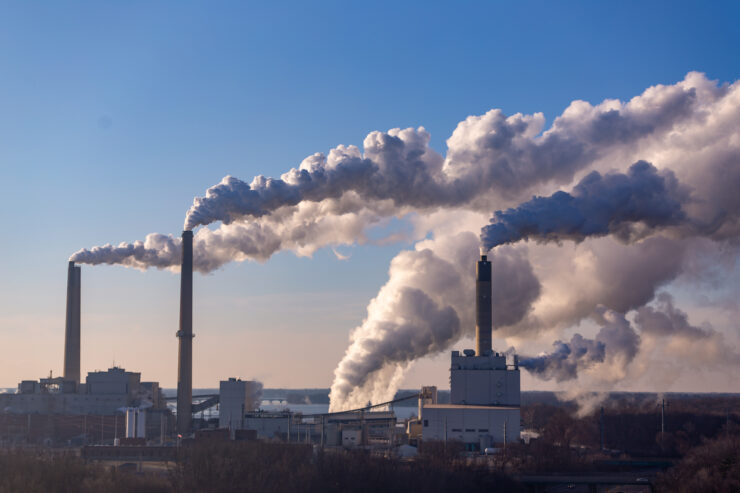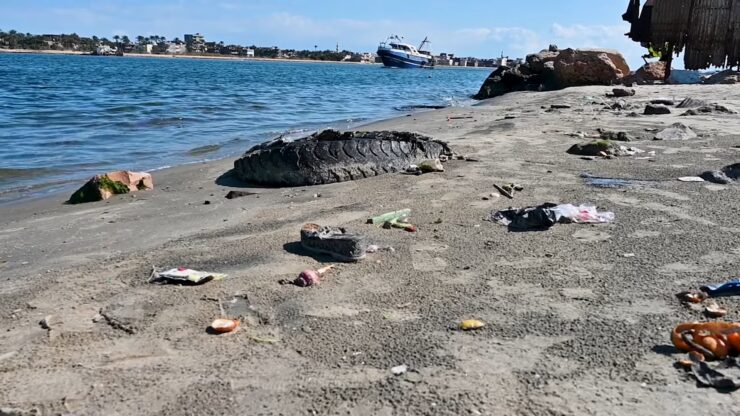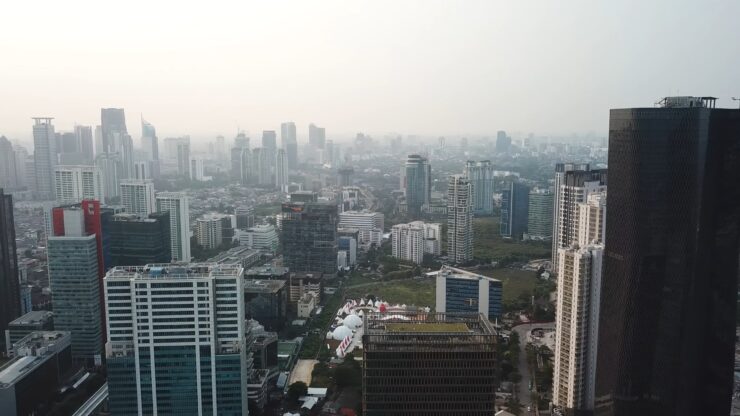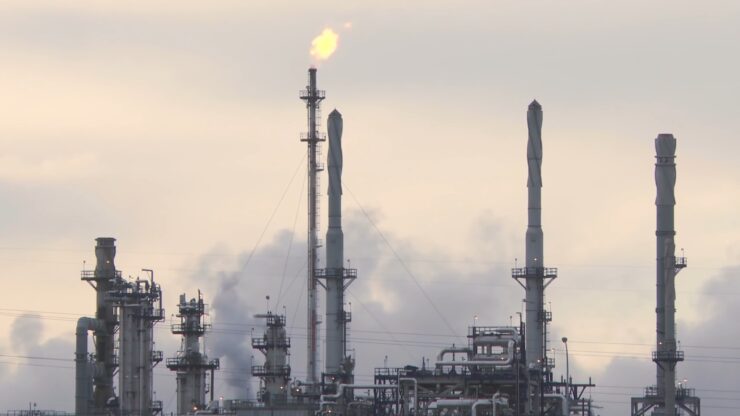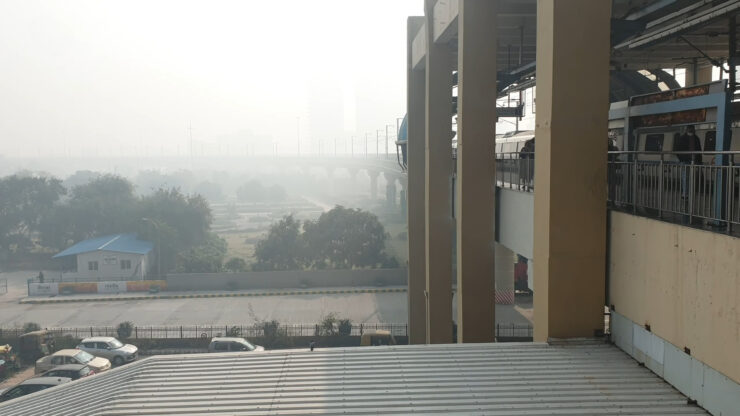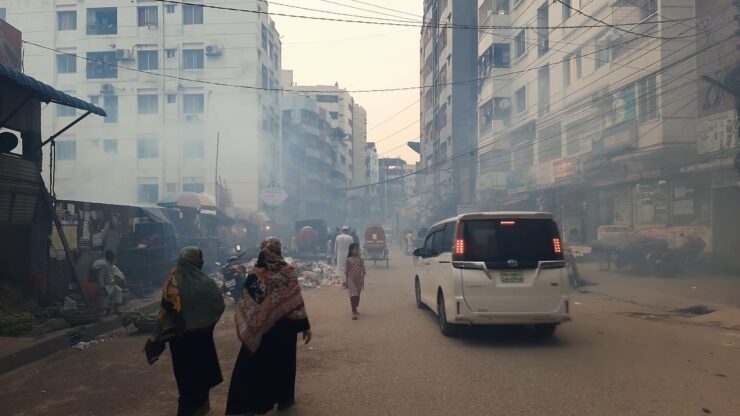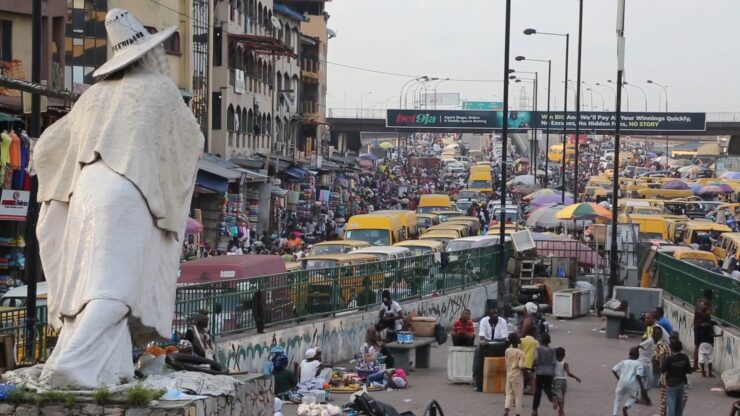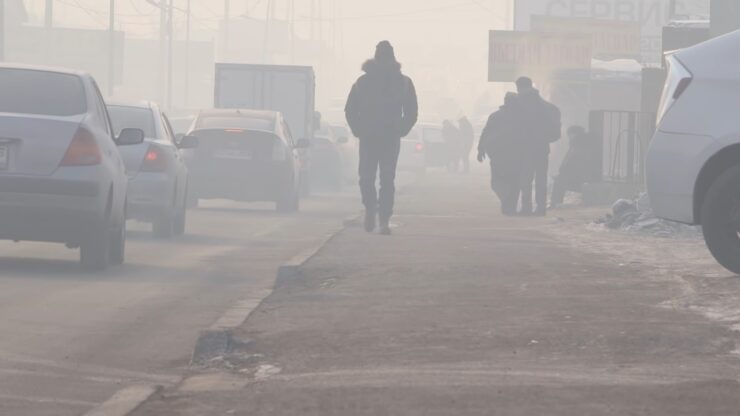Environmental pollution is a pressing global issue that poses significant health risks and ecological challenges. Unfortunately, there are countries around the world that face particularly high levels of pollution.
From air to water contamination, these nations struggle to combat the detrimental effects of environmental degradation.
In this article, we will delve deep into the 12 most polluted countries in 2024, shedding light on the reasons behind their pollution levels and the challenges they face.
12. Egypt: Navigating the Nile’s Challenges
Egypt, historically known as the gift of the Nile, faces modern-day challenges related to the very river that has been its lifeline for millennia.
Water Pollution in the Nile
The Nile River, essential for Egypt’s agriculture and drinking water, faces pollution from industrial discharges, agricultural runoff, and untreated sewage. This has led to a decline in water quality, affecting both human populations and aquatic life.
Desertification and Land Degradation
Egypt’s arable land is under threat from desertification, a process accelerated by unsustainable agricultural practices and climate change. This poses challenges for food security and the livelihoods of many farmers in the region.
11. Indonesia: Forests, Fires, and Urban Growth
Indonesia, an archipelago nation with diverse ecosystems, faces a unique set of environmental challenges, especially concerning its rainforests.
Deforestation and Peatland Fires
Illegal logging and land clearance for agriculture, particularly palm oil plantations, have led to significant deforestation in Indonesia. The draining of peatlands for agriculture makes them highly susceptible to fires, which release vast amounts of carbon dioxide and other pollutants into the atmosphere.
Urban Pollution in Jakarta
Jakarta, the capital city, faces severe air and water pollution. Rapid urbanization, traffic congestion, and industrial growth have resulted in deteriorating air quality, while rivers in the city are polluted with domestic and industrial waste.
10. Iran: Desertification and Industrial Growth
Iran, a country with a rich cultural heritage and vast landscapes, is grappling with environmental issues that are intensified by its geographical challenges.
Sand and Dust Storms
Iran frequently faces sand and dust storms, especially in its southwestern regions. These storms, originating from dried-up wetlands and deserts, significantly degrade air quality, leading to respiratory issues and other health concerns for its residents.
Oil Industry and Environmental Concerns
Iran, being one of the major oil-producing countries, faces environmental challenges related to its oil industry. Oil spills, gas flaring, and wastewater discharge from refineries contribute to both air and water pollution in various regions.
9. India: A Subcontinent’s Battle with Pollution
India, with its vast population and rapid industrialization, faces monumental challenges in managing its environmental footprint.
Crop Burning and Seasonal Smog
In northern parts of India, the practice of crop burning after harvests leads to a significant spike in air pollution levels. This, combined with vehicular emissions and industrial pollutants, creates a thick smog, especially during the winter months.
River Pollution and the Ganges Dilemma
The Ganges, one of India’s most sacred rivers, is also one of its most polluted. Industrial discharges, untreated sewage, and religious rituals contribute to the river’s pollution. Efforts like the ‘Namami Gange’ program have been initiated to clean and rejuvenate the river.
8. Pakistan: Balancing Development and Environmental Health
Pakistan, with its diverse landscapes ranging from mountains to deserts, faces a myriad of environmental challenges as it pursues economic development.
Brick Kilns and Air Quality
One of the significant sources of air pollution in Pakistan is the traditional brick kilns. These kilns, which use old and inefficient methods, emit large amounts of black carbon and other pollutants. Efforts are being made to modernize these kilns and reduce their environmental impact.
Water Scarcity and Pollution
Pakistan is grappling with water scarcity, and the available water sources are often polluted. Industrial effluents, agricultural runoff, and inadequate sewage treatment contribute to the contamination of rivers and groundwater.
7. Bangladesh: Navigating Environmental Challenges in a Delta Nation
Bangladesh, a country crisscrossed by rivers, faces unique environmental challenges due to its geographical location and high population density.
Textile Industry’s Water Pollution
Bangladesh’s booming textile industry is a significant contributor to its economic growth. However, the industry also discharges vast amounts of untreated wastewater into rivers, leading to water pollution. This not only affects aquatic life but also poses health risks to communities relying on these water sources.
Air Pollution in Urban Centers
Dhaka, the capital city of Bangladesh, frequently ranks among the world’s most polluted cities. The rapid urbanization, combined with vehicular emissions and construction activities, has led to a decline in air quality. The dense smog and particulate matter in the air have become a public health concern.
6. Afghanistan: War and Environmental Degradation
Afghanistan, a country that has seen decades of conflict, also faces environmental challenges that compound its struggles.
Solid Fuel Dependency
Many households in Afghanistan rely on solid fuels for cooking and heating. The burning of these fuels, especially in poorly ventilated spaces, releases harmful pollutants into the air, affecting indoor air quality and leading to health issues.
Dust Storms and Air Quality
Afghanistan frequently experiences dust storms, which significantly degrade air quality. These storms, combined with unregulated industrial activities and inadequate waste management, contribute to the country’s pollution woes.
5. Nigeria: Africa’s Giant Faces Environmental Hurdles
Nigeria, one of Africa’s most populous nations, grapples with significant pollution challenges, especially in its bustling urban centers.
The Niger Delta Crisis
The Niger Delta region in Nigeria has witnessed numerous oil spills over the years, leading to severe water pollution and ecological damage. These spills not only affect marine life but also the livelihoods of local communities dependent on fishing.
Urban Air Pollution
In cities like Lagos and Abuja, air pollution is a daily challenge. Industrial activities, combined with traffic congestion and the use of low-quality fuels, contribute to smog and poor air quality. This has led to an increase in respiratory illnesses among the urban population.
4. Ghana: A Growing Concern in West Africa
Ghana, known for its vibrant culture and rich history, unfortunately, faces mounting pollution issues that threaten both its environment and its people.
Electronic Waste: A Modern Challenge
Ghana has become a hotspot for the disposal of electronic waste, particularly in areas like Agbogbloshie. The burning and dismantling of electronic equipment release harmful toxins into the air, soil, and water, posing severe health risks to local communities.
Industrial Activities and Air Quality
Air pollution from industrial activities and vehicle emissions is a growing concern in Ghana’s urban areas. The lack of stringent regulations and monitoring means that many industries release untreated pollutants into the environment, further deteriorating the air quality.
3. Lebanon: Battling Multiple Environmental Issues
Lebanon, a country known for its rich history and cultural heritage, grapples with multiple environmental issues, including air and water pollution.
Waste Management Woes
One of the primary contributors to Lebanon’s pollution problem is its inadequate waste management systems. The country has faced challenges in waste disposal, leading to the burning of waste in open areas. This not only pollutes the air but also poses health risks to nearby communities.
Aging Infrastructure and Industrial Pollution
Lebanon’s aging infrastructure, combined with a lack of stringent environmental regulations for industries, has exacerbated its environmental challenges. Industrial emissions, coupled with vehicular pollution, have led to deteriorating air quality in urban centers.
2. Myanmar: The Second Most Toxic Country
Myanmar, a country rich in natural beauty, unfortunately, faces significant environmental challenges, with air and water pollution being major concerns.
Industrial Pollution and Deforestation
Industrial pollution, unregulated waste disposal, and rampant deforestation contribute to Myanmar’s polluted state. The unchecked growth of industries without proper environmental safeguards has led to increased pollutants in the air and water.
Biomass Burning and Air Quality
In rural areas of Myanmar, the use of biomass for cooking and the burning of agricultural residues are common practices. These contribute to poor air quality, affecting the health of rural communities and adding to the country’s overall pollution levels.
1. Mongolia: The Most Polluted Country
Mongolia tops the list as one of the most polluted countries. The capital city, Ulaanbaatar, is particularly affected.
Ulaanbaatar’s Air Quality Crisis
Ulaanbaatar experiences severe air pollution, primarily due to the extensive use of coal for heating and cooking. During winter, temperature inversions exacerbate the problem, trapping pollutants close to the ground and causing harmful air quality conditions that pose significant health risks to its residents.
The Coal Dependency Dilemma
The reliance on coal, especially in the colder months, is a major contributor to Mongolia’s pollution problem. Efforts to transition to cleaner energy sources are underway, but the change is gradual, and the effects of coal pollution continue to be felt by the population.
Pollution: Types and Sources
Air Pollution
Air pollution is the introduction of harmful substances into the Earth’s atmosphere. These can be in the form of gases, particulates, or biological molecules.
- Sources: Industrial emissions, vehicular exhaust, agricultural practices, and natural events like volcanic eruptions.
- Effects: Respiratory diseases, climate change, and damage to the ozone layer.
Water Pollution
Water pollution involves the contamination of water bodies such as lakes, rivers, oceans, and groundwater.
- Sources: Industrial waste discharge, sewage and wastewater, oil spills, and agricultural runoff.
- Effects: Harm to aquatic life, spread of waterborne diseases, and disruption of aquatic ecosystems.
The Global Impact of Pollution
Climate Change and Global Warming
The excessive release of greenhouse gases, primarily from human activities, leads to global warming, which in turn affects global climate patterns.
- Consequences: Rising sea levels, extreme weather events, and loss of biodiversity.
Ocean Acidification
Increased levels of carbon dioxide (CO2) lead to higher concentrations of carbonic acid in oceans, making them more acidic.
- Consequences: Damage to coral reefs, reduced calcium carbonate which affects marine life like shellfish and plankton.
Technological Solutions to Combat Pollution
Air Purification Technologies
Innovations in air purification, such as HEPA filters, activated carbon, and UV light purifiers, help in reducing indoor air pollutants.
Wastewater Treatment
Advanced wastewater treatment technologies, including reverse osmosis, biofiltration, and ozonation, help in purifying water and making it safe for consumption and discharge.
The Role of Policy and International Cooperation
International Environmental Agreements
Highlighting global agreements like the Paris Agreement, Kyoto Protocol, and the Montreal Protocol, which aim to address various environmental challenges.
National Policies and Regulations
Discussing the importance of stringent national policies, regulations, and enforcement mechanisms to curb pollution and promote sustainable practices.
Public Awareness and Individual Responsibility
The Role of Education
The importance of environmental education in schools and communities is to raise awareness about pollution and its effects.
Individual Actions
Discussing how individual actions, such as reducing waste, using public transport, and supporting sustainable products, can make a significant difference in combating pollution.
FAQ
What is the difference between primary and secondary pollutants?
Primary pollutants are directly emitted from sources, such as factories or vehicles, and include substances like carbon monoxide and sulfur dioxide. Secondary pollutants, on the other hand, form in the atmosphere through chemical reactions between primary pollutants. Ozone is a common secondary pollutant.
How does pollution affect global economies?
Pollution can have significant economic impacts. Health issues arising from pollution can increase medical costs and reduce labor productivity. Additionally, polluted environments can deter tourism and affect property values.
Are there any health benefits to living in less polluted areas?
Absolutely! Living in less polluted areas can reduce the risk of respiratory diseases, cardiovascular problems, and certain cancers. It can also improve overall mental well-being and reduce the risk of developmental issues in children.
How do microplastics contribute to pollution?
Microplastics, tiny fragments of plastic less than 5mm in size, can enter water bodies and harm aquatic life. They can also end up in the food chain, posing potential health risks to humans.
What role do trees play in combating air pollution?
Trees act as natural air purifiers. They absorb pollutants like carbon dioxide and release oxygen. Urban forestry and afforestation are vital strategies in combating air pollution.
Final Words
Pollution, in its many forms, is one of the most pressing challenges of our time. While the list of the most polluted countries sheds light on the severity of the issue in specific regions, it’s crucial to remember that pollution knows no borders.
Collective action, informed choices, and global cooperation are our best tools in creating a cleaner, healthier future for all.

